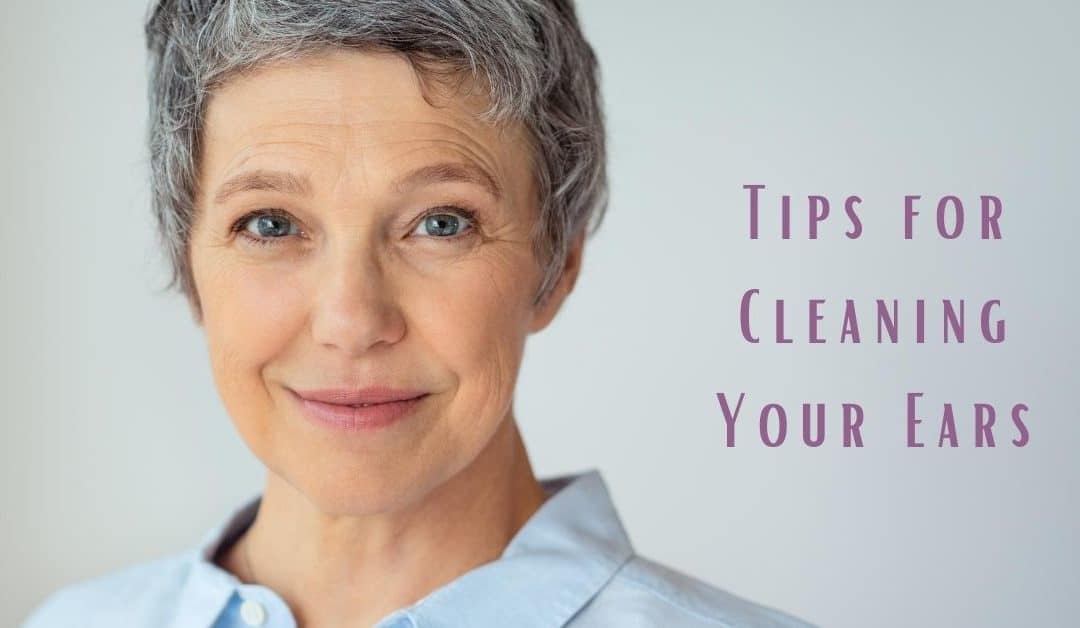Cleaning our ears and removing earwax may seem like a simple task that we perform routinely with ease. But do your ears ever feel blocked up? This is a sign of excess earwax which can make it a little more difficult to hear clearly. You may need to try new ways to clean your ears that do not involve using a cotton swab!
What is Earwax?
Earwax, also known as cerumen, is naturally produced by the body and actually helps lubricate as well as protect our ears. Sweat glands in the walls of the ear create fatty secretions which move through the ear canal; absorbing dead skin cells, dirt, hair and other debris. The mixture of these substances is what we refer to as earwax. Earwax contains antibacterial properties which means that the ears are self-cleaning, trapping dirt and dust so these harmful substances do not further enter the ear. Jaw movement – talking, eating etc.- helps move earwax out of the ear canal and to the ear opening where it typically dries and falls out.
Though earwax has its own natural way of exiting the ears but when there is an excess, it requires our removal.
Impact of Excessive Earwax
Earwax can buildup and affect hearing, this is known as impaction. Symptoms include the following:
- Feeling of fullness in the ear
- Pain, aching or ringing
- Difficulty hearing
- An odor and/or discharge from the impacted ear
- Dizziness and/or cough
If unaddressed, excessive earwax can fill the ear canal and cause:
- Temporary hearing loss: if the ear canal is blocked with earwax, sound is not able to pass through and reach the inner ear so you are not able to hear with clarity.
- Ear infections: the buildup of bacteria can lead to infection which cause pain, fever, coughing etc.
It is important to safely remove earwax if you are experiencing any of these symptoms. There are helpful ways to better clean your ears!
Tips for Cleaning Your Ears
Most people clean their ears with a cotton swab. This is the strategy most of us have observed, were taught, and is the only way we know. However, this method is not recommended because it can often push earwax deeper into the ear. This can affect the eardrum, cause infection, and contribute to hearing loss. Best practices for cleaning the ears include:
- Soften Earwax
This method involves using substances that soften earwax which makes removal easier. You can use your own solution or purchase over the counter ear drops that soften wax. Common ingredients used include: mineral oil, baby oil, glycerin, and hydrogen peroxide. You place drops into your ear and after a little bit of time, drain or rinse the ears out.
- Ear Irrigation
There are different methods but ear irrigation involves using water or a simple saline solution to drain the ears. You tilt your head and place drops of the solution into the ear and after a minute or so, tilt your head the other way to drain the fluid and wax.
- Ask Doctor
A doctor can effectively remove earwax and is equipped with instruments designed for the ears (cerumen spoon, forceps, suction devices etc.), making this process easier.
These are the safest and most effective ways to clean your ears when you feel earwax building up.
Additional Tips for Healthy Hearing
In addition to safely cleaning your ears, there are additional pieces of information that is useful for protecting your ears including:
- Avoid using any small items to enter the ear (bobby pins, cotton swabs, pins etc.) because you may push the earwax deeper in the ear.
- Also avoid using ear candles which are inserted into the ear and lit to suction earwax; but this is entirely too dangerous and ineffective.
- If you use hearing aids, earwax accumulation can be a greater occurrence. It is crucial to thoroughly clean your hearing aids, removing wax regularly.
- Take the time to dry out your ears after swimming to prevent infection. Using a cloth wipe can be helpful to do this.
- If you experience any pain, loss of hearing, injury etc., consult with a healthcare provider as soon as possible.
If you have concerns with your ears and hearing, contact us today!

